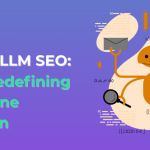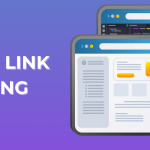Table Of Content
Internal linking is an important but sometimes overlooked component of search engine optimization (SEO). By choosing which internal links to use, you can considerably improve your website’s user experience, search engine ranking, and general performance.
This comprehensive guide will explore the importance of internal links, the types of internal links, best practices, tools, and actionable strategies to optimize your website effectively.
The Importance Of Internal Links For SEO
Internal links are essential to SEO since they make your website’s structure more understandable to search engines. They establish a distinct hierarchy and allocate page authority throughout your website, guaranteeing that the most crucial pages get the attention they deserve. ere’s why internal links are important:
Better Crawling and Indexing: Internal links help search engine bots find and index your material. A well-organized internal linking scheme guarantees these bots can reach every page on your website.
Improved User Experience: Internal links make it easier for users to access relevant content and traverse your website.
Enhanced Page Authority: By passing on link equity to your most significant pages, you may increase their authority and their likelihood of appearing higher in search results.
Decreased Bounce Rate: By pointing visitors to more pertinent content, well-designed internal linking encourages visitors to stay on your website longer and lowers your bounce rate.
Enhanced Page Authority: By passing on link equity to your most significant pages, you may increase their authority and their likelihood of appearing higher in search results.
Decreased Bounce Rate: Well-designed internal linking encourages visitors to stay on your website longer and lowers your bounce rate by pointing them to more pertinent material.
Types Of Internal Links

Understanding the various forms of internal links can allow you to use them to their full potential:
- Navigational Links: Links in your website’s sidebar, footer, or navigation menu are called navigational links. They make important parts of your website easier for people to locate.
- Contextual Links: Contextual links are included in your site’s content. Pointing readers to relevant articles lets users learn more in-depth information about a certain subject.
- Footer Links: Located at the foot of your pages, these links frequently lead to crucial sites like terms of service, privacy policies, and contact details.
- Image Links: Pointers to product pages or relevant material shown as links on pictures.
Best Practices For Internal Linking
Follow these best practices to boost the benefits of internal linking:
(i) Adopt Descriptive Anchor Text
Ensure the anchor text you use describes and is pertinent to the linked page. This facilitates search engines’ comprehension of the linked page’s context and content. Descriptive anchor text further enhances the user experience by setting specific requirements regarding the linked information.
(ii) Link To Deep Pages
Don’t limit your links to your homepage or the highest-level pages; instead, link to deeper pages. Provide connections to more in-depth pages so that link equity is spread more fairly throughout your website. This tactic may enhance the exposure and ranking of your less prominent pages.
(iii) Keep A Logical Structure
Arrange your internal links in a way that makes sense and respects your website’s design, with a distinct hierarchy. A well-organized internal linking strategy makes it simpler for people and search engines to explore your website.
(iv) Restrict The Number Of Links On Each Page
Although internal links are helpful, an excessive number might confuse readers and lessen the value of the connection. Remember to include just the most relevant links to maintain balance. This strategy ensures that your pages stay clear and easy to navigate.
(v) Update Your Links Frequently
Make sure your internal links are still relevant by periodically checking and updating them as necessary. In order to keep the user experience flawless, fix or replace broken links. Maintaining your links regularly keeps your material current and your website operating at peak efficiency.
Actionable Strategies For Effective Internal Linking
Use these techniques to improve your internal links for search engine optimization:
Build a Content Hub: Construct a main hub page connecting to relevant subpages. This arrangement optimizes link equity distribution while simultaneously improving user experience.
Utilise Content from Cornerstone: Decide which content is your cornerstone and optimize it. These are your most important and reliable pages, and other pertinent sites should connect to them often.
Apply breadcrumbs: A secondary navigation system like breadcrumbs makes it easier for visitors to comprehend where they are in your website’s structure and return to earlier pages.
Adopt a Silo Structure: Put in place a silo structure by organizing similar information into clusters or silos and connecting each item to a main hub page. This strategy improves SEO and strengthens theme relevancy.
Use Related Posts Plugins: If you manage a blog, you may improve user engagement and SEO by using related posts plugins to automatically produce internal connections to similar material.
Tools To Help With Internal Linking
There are several tools available to help you optimize your internal linking strategy:
Google Search Console: This free tool from Google shows you how your internal links are placed across your website and offers insights into them.
Yoast SEO: This well-known WordPress plugin provides internal linking recommendations and may assist you in building a strong linking structure.
Screaming Frog SEO Spider: This program scans your website for problems or areas needing improvement and then generates comprehensive reports on your internal links.
Ahrefs: Ahrefs’s site audit function assists you in examining your internal link structure and provides suggestions for improving internal link performance.
Link Whisper: This WordPress plugin helps you develop a logical and successful linking strategy by offering intelligent recommendations for internal links.
Conclusion
Internal linking is a significant yet sometimes ignored component of SEO. By comprehending its significance and using optimal methodologies, one may considerably augment the functionality of their website, elevate its search engine ranks, and furnish an enhanced user experience.
Create a strong internal linking structure using the techniques and resources covered in this tutorial, and keep a close eye on your metrics to guarantee ongoing progress.
Internal linking aims to create a unified, user-friendly, and search-engine-optimized website, not only to connect pages. To maximize the impact of your SEO efforts, begin optimizing your internal links right now.
Read Also:








